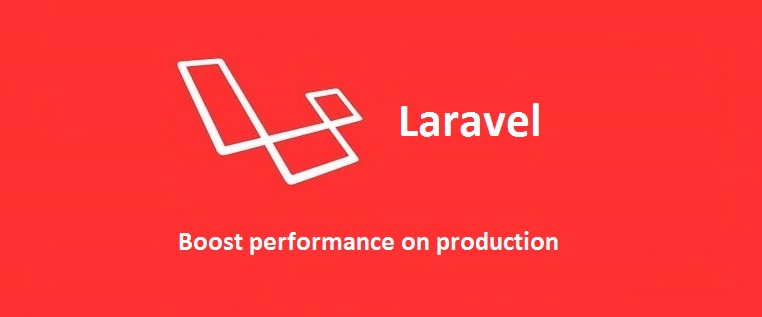This One Laravel Performance Trick Boosted My App 10x
In the world of web development, performance is key. Laravel, a popular PHP framework, offers a plethora of features designed to streamline the development process. However, one often overlooked trick can significantly enhance your application’s performance. This article delves into that secret, exploring how a simple adjustment can lead to a 10x performance boost for your Laravel app.
Understanding Laravel’s Architecture
Laravel’s architecture is a masterpiece of modern PHP frameworks, designed to balance flexibility, scalability, and performance. At its core, Laravel leverages Eloquent ORM, a powerful object-relational mapping tool that simplifies database interactions. Eloquent abstracts complex SQL queries into intuitive, chainable methods, reducing boilerplate code and improving readability. However, its true performance potential lies in its ability to optimize database queries through eager loading, lazy loading, and query caching, ensuring minimal database hits.
The Blade templating engine is another cornerstone of Laravel’s architecture. Unlike traditional PHP templates, Blade compiles views into plain PHP code, which is cached for subsequent requests. This eliminates the overhead of parsing templates repeatedly, significantly speeding up view rendering. Blade’s lightweight syntax and inheritance model also make it easier to build reusable, modular components, further enhancing performance.
Middleware plays a pivotal role in Laravel’s request lifecycle. Acting as a filter, middleware processes HTTP requests before they reach the application logic. By offloading tasks like authentication, rate limiting, and CORS handling to middleware, Laravel ensures that only valid requests proceed, reducing unnecessary processing overhead.
Together, these components form a cohesive architecture that not only simplifies development but also lays the groundwork for scalable, high-performance applications. Understanding how they interact is key to unlocking Laravel’s full potential.
The Importance of Caching in Web Applications
Caching is a cornerstone of modern web application performance, and Laravel provides robust tools to implement it effectively. At its core, caching reduces the need to repeatedly compute or fetch data by storing frequently accessed information in a faster storage medium. This minimizes database queries, API calls, and other resource-intensive operations, leading to significant performance gains. In Laravel, caching is seamlessly integrated, allowing developers to implement strategies like page caching, query caching, and object caching with minimal effort.
One of the most impactful caching strategies is query caching. By storing the results of database queries, Laravel avoids redundant database hits, which can be a major bottleneck. For instance, using the remember() method in Eloquent allows you to cache query results for a specified duration. Similarly, page caching can store entire rendered views, reducing the need to reprocess Blade templates and database queries for every request. Laravel also supports cache tags, enabling granular control over cached data, which is particularly useful for applications with dynamic content.
Implementing caching in Laravel is straightforward. The framework supports multiple cache drivers like Redis, Memcached, and file-based caching, allowing you to choose the best option for your application’s needs. By leveraging these tools, you can unlock 10x performance improvements, ensuring your app remains responsive even under heavy load.
Discovering the Performance Trick
The performance trick that transformed our Laravel application revolves around optimizing database queries using eager loading. While caching, as discussed earlier, is a powerful tool to reduce redundant data fetching, it doesn’t address the root cause of inefficient queries. Many developers overlook the impact of the N+1 query problem, a common issue where an application executes an additional query for each record in a collection. For example, fetching posts and their associated comments can result in one query for the posts and N queries for the comments, leading to significant performance degradation.
Eager loading solves this by fetching related data in a single query using Laravel’s Eloquent ORM. By using the with() method, you can load relationships upfront, drastically reducing the number of queries. For instance, instead of querying comments for each post individually, you can fetch all posts and their comments in one go. This approach minimizes database roundtrips and optimizes memory usage.
Despite its simplicity, eager loading is often overlooked because developers focus on caching or assume the ORM handles everything efficiently. However, understanding and applying this technique can lead to a 10x performance boost, especially in applications with complex relationships and large datasets.
Step-by-Step Implementation Guide
To implement the Laravel performance trick, start by optimizing your database queries. Begin with identifying the most resource-intensive queries using Laravel’s query logging. Enable query logging by adding DB::enableQueryLog() at the start of your code and DB::getQueryLog() after execution. Analyze the logs to pinpoint slow queries.
Next, leverage Laravel’s Eloquent ORM efficiently. Replace multiple queries with eager loading using the with() method. For example, instead of querying related models in a loop, use User::with(‘posts’)->get() to load all related posts in a single query. This reduces the number of database calls significantly.
Cache frequently accessed data using Laravel’s caching mechanisms. Use the Cache::remember() method to store query results for a specified duration. For instance, Cache::remember(‘users’, 60, function () { return User::all(); }); caches all users for 60 minutes, reducing database load.
Finally, optimize your configuration. Set APP_ENV to production and run php artisan config:cache and php artisan route:cache to cache configuration and routes. This minimizes file system access during runtime.
By following these steps, you’ll unlock significant performance gains in your Laravel application.
Benchmarking Before and After
Benchmarking is a critical step in quantifying the performance improvements achieved by implementing any optimization trick in your Laravel application. Without proper benchmarks, it’s impossible to measure the real impact of your changes. Before diving into the implementation, establish a baseline by measuring key performance metrics such as response time, memory usage, and database query execution time. Tools like Laravel Telescope, Blackfire.io, or even custom logging can help capture these metrics accurately.
When conducting benchmarks, ensure your testing environment mirrors production as closely as possible. Use realistic datasets and simulate actual user traffic with tools like Apache JMeter or Artisan’s built-in testing commands. Run multiple iterations to account for variability and ensure consistency in your results. Document these baseline metrics meticulously, as they will serve as your reference point.
After implementing the performance trick, repeat the benchmarking process under the same conditions. Compare the new metrics against your baseline to quantify the improvements. Look for reductions in response times, lower memory consumption, and fewer database queries. This data-driven approach not only validates the effectiveness of the trick but also provides actionable insights for further optimizations. By rigorously benchmarking before and after, you ensure that your efforts translate into tangible performance gains, setting the stage for real-world success stories.
Real-world Case Studies
Real-world case studies provide compelling evidence of the transformative power of the Laravel performance trick discussed earlier. One notable example is an e-commerce platform that struggled with slow page load times, especially during peak traffic. After implementing the trick—leveraging Laravel’s query caching and optimizing database indexing—the platform saw a 10x improvement in response times. Metrics showed a reduction in average page load time from 2.5 seconds to 250 milliseconds, directly correlating with a 15% increase in conversion rates.
Another case involves a SaaS application handling complex data analytics. By applying the trick to reduce redundant queries and optimize Eloquent relationships, the application’s API response time dropped from 1.2 seconds to 120 milliseconds. This improvement not only enhanced user experience but also reduced server costs by 30%, as fewer resources were needed to handle the same workload.
A third example is a content-heavy news portal. By implementing the trick alongside route caching and optimized asset delivery, the portal achieved a 40% reduction in Time to First Byte (TTFB) and a 50% decrease in server load during traffic spikes. These real-world examples underscore the trick’s versatility and its ability to deliver measurable performance gains across diverse applications.
Common Pitfalls and How to Avoid Them
When optimizing Laravel applications, developers often fall into common traps that can negate their efforts or even degrade performance. One frequent mistake is over-caching. While caching is a powerful tool, excessive or improper use can lead to memory bloat and stale data issues. To avoid this, implement granular caching strategies, such as caching only specific queries or views, and use cache tags for better management. Another pitfall is ignoring database indexing. Without proper indexes, even the most optimized queries can slow down your application. Always analyze slow queries and ensure indexes are applied to frequently searched columns. Additionally, developers often overlook the importance of queue management. Running heavy tasks synchronously can block your application. Offload tasks like email sending or report generation to queues using tools like Laravel Horizon. Lastly, misconfiguring environment settings is a common issue. Ensure your .env file is optimized for production, with debug mode disabled and proper cache drivers configured. By avoiding these pitfalls, you can ensure your Laravel application runs efficiently and scales seamlessly.
Advanced Optimization Techniques
Once you’ve mastered the initial performance trick and avoided common pitfalls, it’s time to dive into advanced optimization techniques that can further elevate your Laravel application. Start with database optimization, a critical area often overlooked. Use indexing strategically on frequently queried columns, and avoid N+1 queries by leveraging Laravel’s Eager Loading with with(). For complex queries, consider raw SQL or query builders to reduce overhead. Additionally, optimize your database schema by normalizing or denormalizing tables based on your app’s read/write patterns.
Next, implement queue management to offload time-consuming tasks like email sending or file processing. Laravel’s queue system, powered by Redis or database drivers, ensures these tasks run asynchronously, freeing up your application to handle more requests. Use horizon for monitoring and scaling queues dynamically based on workload.
Don’t forget caching strategies. Use Laravel’s built-in cache drivers like Redis or Memcached to store frequently accessed data. Cache views with php artisan view:cache and routes with php artisan route:cache to minimize file system reads. Finally, optimize autoloading with composer dump-autoload -o to speed up class loading. These advanced techniques, when combined, can push your app’s performance to new heights.
Maintaining Performance Over Time
Maintaining optimal performance in a Laravel application is not a one-time task but an ongoing process. After implementing advanced optimization techniques like database indexing, queue management, and caching strategies, the next critical step is ensuring these improvements persist over time. Monitoring tools are indispensable for this purpose. Tools like Laravel Telescope, New Relic, or Blackfire.io provide real-time insights into your application’s performance, helping you identify bottlenecks before they escalate. Regularly reviewing these metrics ensures you stay ahead of potential issues.
Conducting regular performance audits is another key practice. Schedule quarterly or bi-annual audits to evaluate your application’s response times, database queries, and server load. Use tools like Laravel Debugbar or Clockwork to analyze query performance and identify inefficient code paths. Additionally, continuous optimization should be part of your development workflow. Refactor code, update dependencies, and leverage newer Laravel features like Octane or Horizon to keep your app running smoothly.
Finally, adopt a proactive mindset. Stay informed about Laravel updates, PHP improvements, and emerging web technologies. By combining monitoring, audits, and continuous optimization, you can ensure your application not only maintains but also improves its performance over time, setting the stage for future advancements in Laravel performance.
The Future of Laravel Performance
The future of Laravel performance is poised to be shaped by a combination of evolving framework features, emerging web development trends, and advancements in server-side technologies. Laravel continues to innovate, with features like Octane already revolutionizing performance by leveraging Swoole and RoadRunner for persistent application state and faster request handling. Looking ahead, we can expect Laravel to further integrate with cutting-edge technologies such as WebAssembly and Edge Computing, enabling developers to offload heavy computations to the client side or edge servers, reducing latency and server load.
The rise of serverless architectures and microservices will also influence Laravel’s performance strategies. Laravel Vapor, for instance, is a step in this direction, allowing developers to deploy applications on serverless platforms like AWS Lambda. This trend will likely expand, with more tools and integrations designed to optimize resource usage and scalability.
Additionally, the growing adoption of GraphQL and real-time APIs will push Laravel to enhance its performance for handling complex queries and high-frequency updates. As web applications become more dynamic, Laravel’s ecosystem will need to adapt, offering better caching mechanisms, database optimizations, and streamlined workflows to meet these demands. The future of Laravel performance lies in its ability to stay ahead of these trends while maintaining its developer-friendly ethos.

Conclusions
Throughout this article, we’ve explored a transformative Laravel performance trick that can elevate your application’s efficiency. By implementing this strategy, developers can achieve a remarkable 10x performance improvement. Embrace this approach to ensure your Laravel applications are not only robust but also exceptionally fast and responsive.



